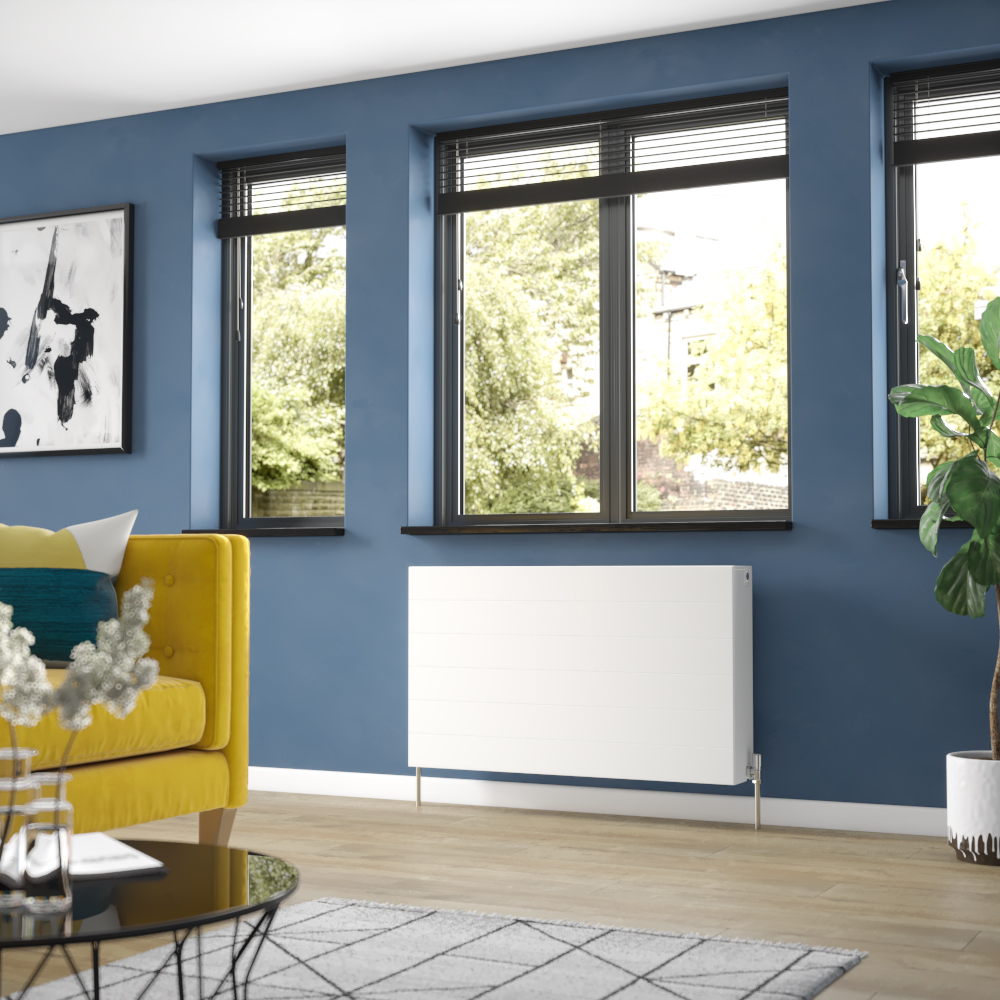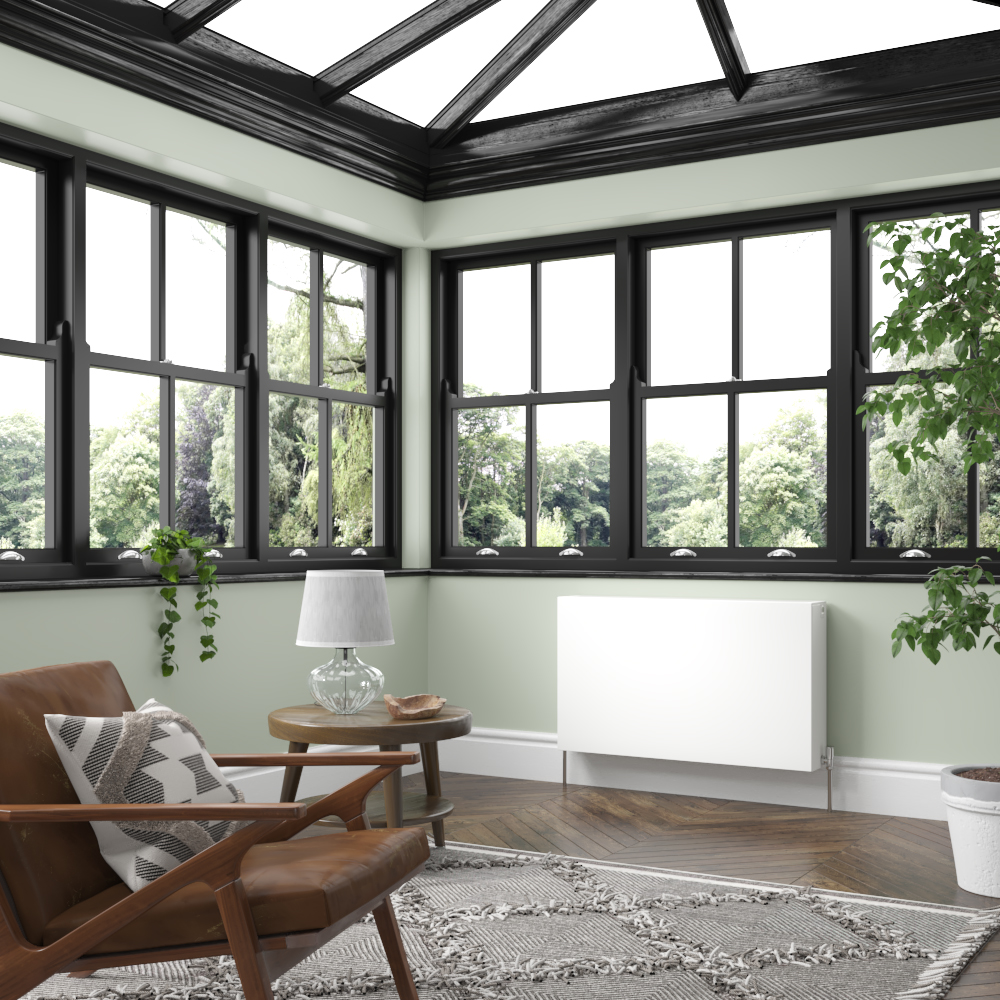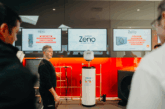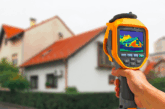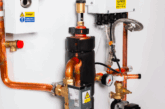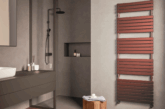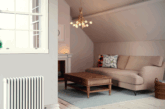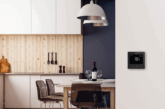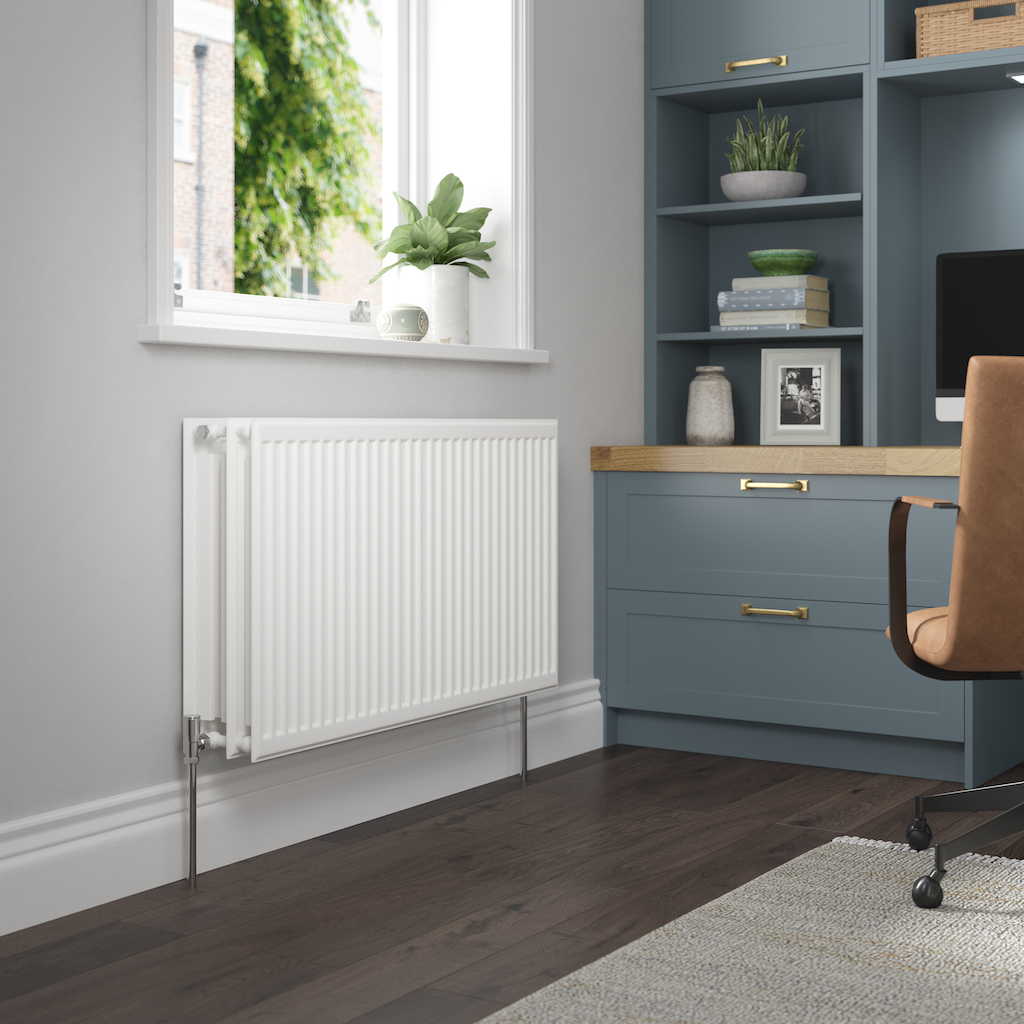
Chris Harvey, Head of Marketing, Stelrad Radiator Group, explores the relationship between heat pumps and radiators.
The arrival of the low temperature heating system has brought with it perhaps understandable questions to which specifiers, architects and housing designers want answers. Can we still use products we use now with traditional boiler driven heating systems if the heat source is a heat pump? Is there anything we need to consider that we take for granted nowadays?
The development of lower temperature heating systems, utilising renewable heating appliances such as air source heat pumps, has given rise to a number of questions including, where do components we have got to know and love over the years fit into the future of heating? Stelrad Radiators has responded forcefully to those people who claim, for example, that underfloor heating is the only or ‘best’ solution for heat pump installations.
Well understood
More than 90% of all heating systems in the UK currently rely on radiators to share the heat around the home, and despite the arrival of underfloor heating there is still a marked reluctance to use UFH upstairs in new build and it can be a complex option to fit as a retrofit solution – so radiators tend to win out most of the time. Radiators heat up and cool down far more quickly than underfloor heating, something that needs to be borne in mind when selecting the best way to share heat around the home.
Remember radiators are poorly named. Most radiators are actually convectors – there is a small amount of radiant heat from the radiator but more than 80% of the heat is convected heat – drawn up behind the radiator where the air passes over the metal surfaces of the radiator and heats the air in the room.
In new build housing, using a heat pump-based solution is a relatively simple solution. The heating system can be designed into the home at the outset so you know the parameters in which the heating system has to operate – the method of construction, the size of the rooms, the number, type and size of doors and windows – so the heat loss calculations can be done up front and radiators sized accordingly.
The key to radiators operating well in any situation is to size them properly at the outset, which involves accurately working out heat loss calculations to achieve the necessary number of BTUs required to provide comfort heating in each room and to select a radiator can provide that level of heating.
In replacement heating systems for older properties there are additional issues. It’s a fact that simply replacing a boiler with a heat pump will usually see the existing radiators unable to provide the levels of heat needed in a home.
So what is the solution – one that is cost effective and straightforward? Do we need to ditch radiators altogether and look for alternatives?
Larger surface areas
The simple answer is no. Radiators will work well with heat pumps, but you will need to increase the size of the radiators to provide a larger metal surface area to heat the air in the room to the level required to provide comfort heating. This need not involve unsightly radiators – for one, modern radiators are aesthetically far more attractive anyway, but there are other solutions too.
You can achieve the extra boost radiators need by replacing the existing single or double panel radiators with the relatively new K3 radiators that have three panels and three sets of fins – providing the additional metal surfaces you need but without increasing the radiator footprint on the wall.
Major radiator manufacturers such as Stelrad have anticipated the significant move towards air source heat pumps in the UK and have added new, larger size radiators to their portfolio providing that option. They have also stepped up the options on the K3 radiator designs available too.
Go vertical
In addition, the huge popularity of vertical radiators has also offered a solution. Vertical radiators clearly have a smaller horizontal footprint than a traditional radiator, but they can be larger by design – taking up floor to ceiling space. It may be more practical and more attractive to have two modern vertical radiators in a room than one large standard radiator which traditionally has been placed along under the main window.
Stelrad has developed a wider range of vertical radiators, adding a huge number of new designs and sizes helping to provide the larger radiators needed by the renewable heating options. These take up a much-reduced horizontal footprint to slot into smaller wall areas in a room, to provide the levels of heat required without taking up large wall areas that will cause confrontation with furniture in the rooms. Vertical radiators can be focal points in the room, part of the décor, and fit nooks and crannies in a room which traditional horizontal radiators won’t do as effectively.
So new low temperature heating systems offer additional opportunities for the products we know and love and have used virtually every day of our working lives, for years. There’s no need to change what we do, just an element of changing how we do it, and the questions we ask when undertaking an installation or specifying for a heating system design.
Radiators are very much ‘fit for the future’ but as always, correct sizing will need to be undertaken to ensure that they keep the home warm and cosy. But can radiators work well with air source heat pumps? Very definitely yes they can – and they already are in a host of installations across the UK.

